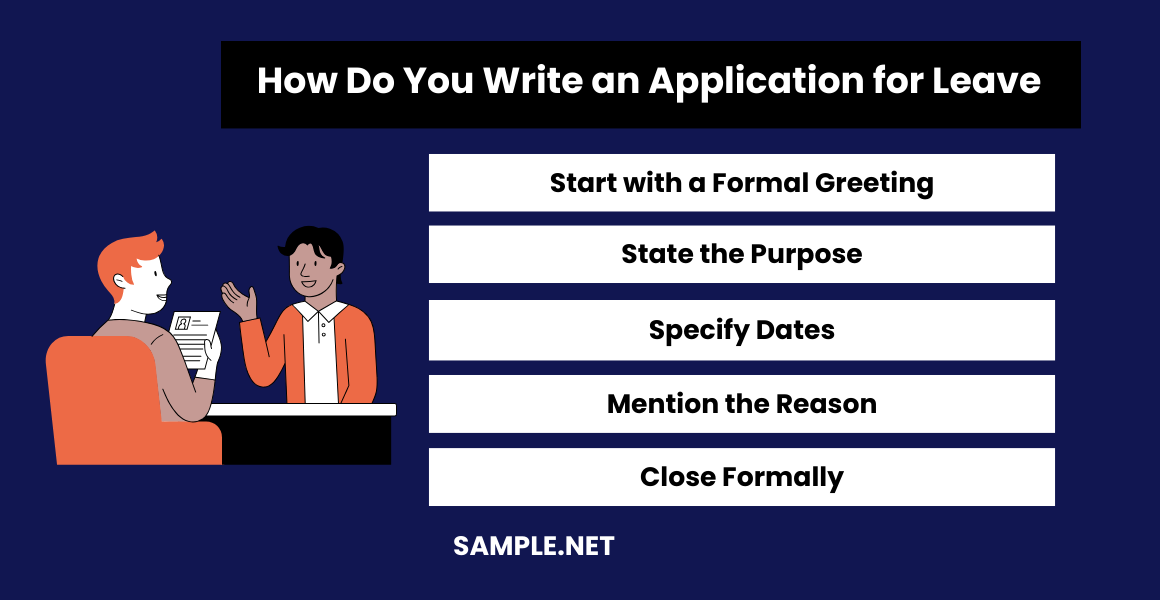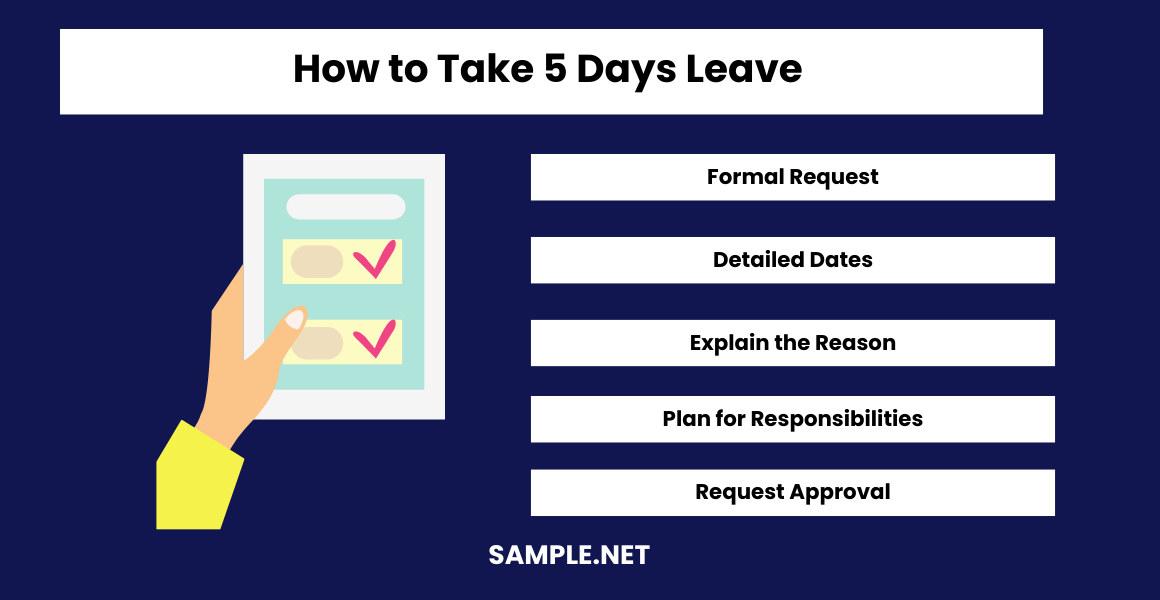Leave Application
-
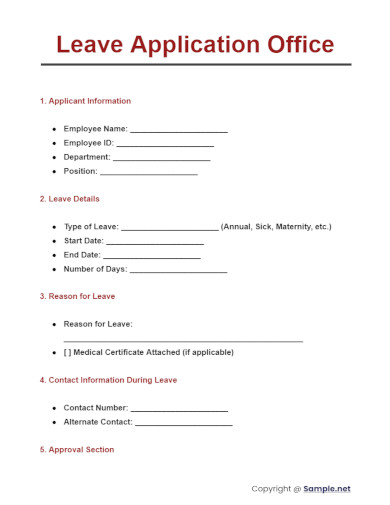
Leave Application Office
download now -
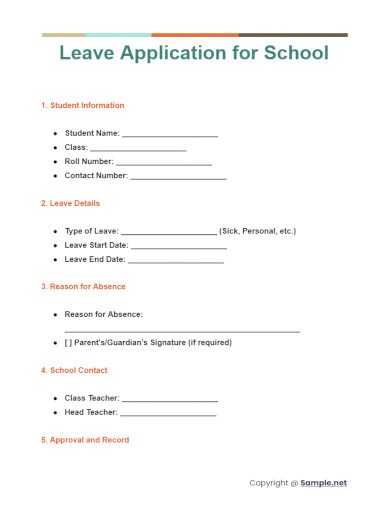
Leave Application for School
download now -
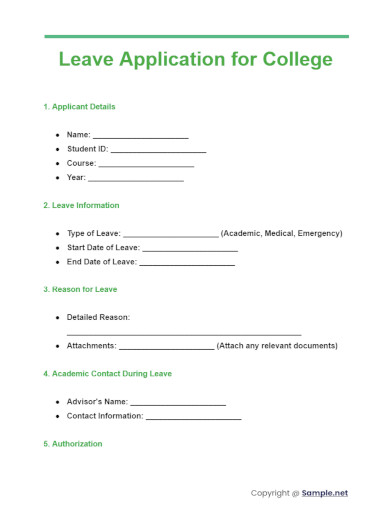
Leave Application for College
download now -
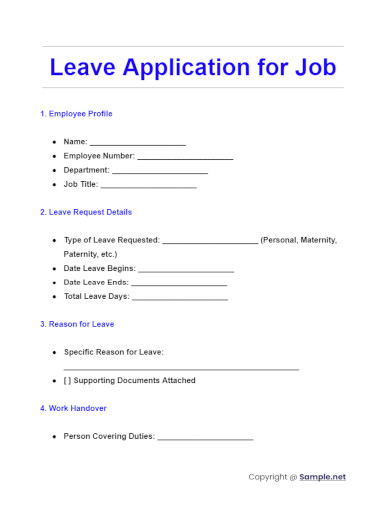
Leave Application for Job
download now -
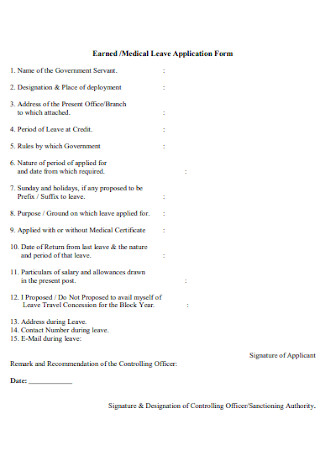
Medical Leave Application Form
download now -
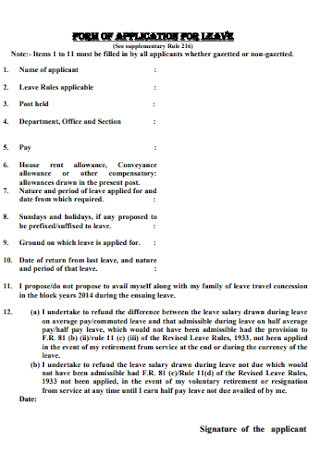
Form of Application for Leave
download now -
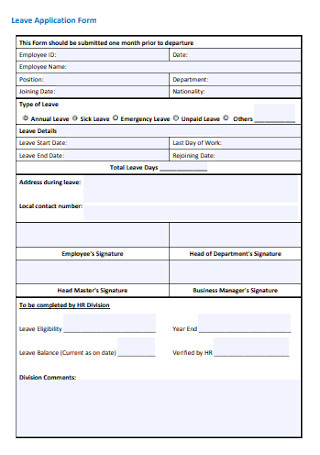
Collge Leave Application Form
download now -
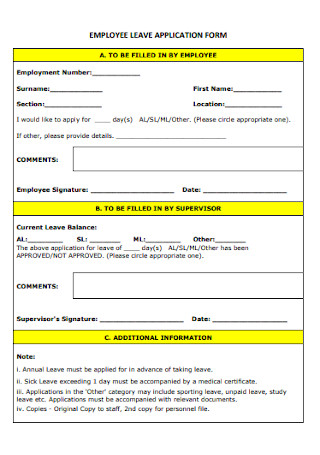
Employee Leave Application Form
download now -
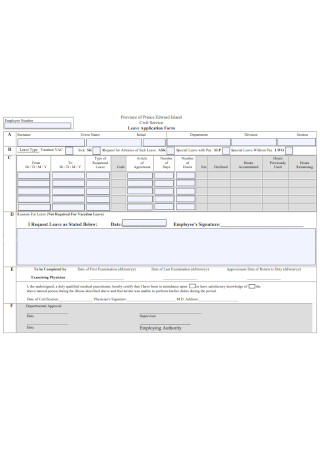
Civil Service Leave Application Form
download now -
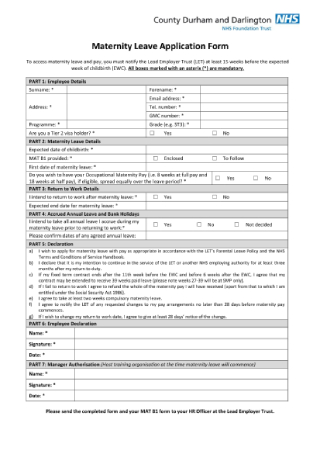
Maternity Leave Application Form
download now -
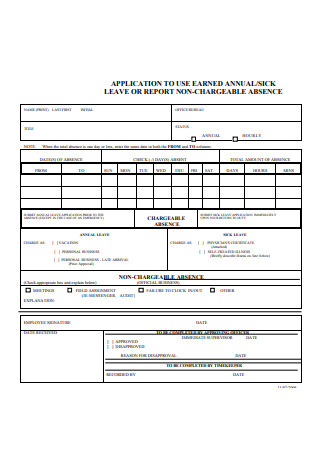
Sick Leave Application Form
download now -
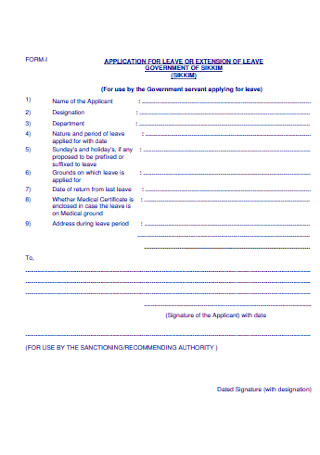
Application for Leave Extension Form
download now -

Application for Casual Leave Form
download now -
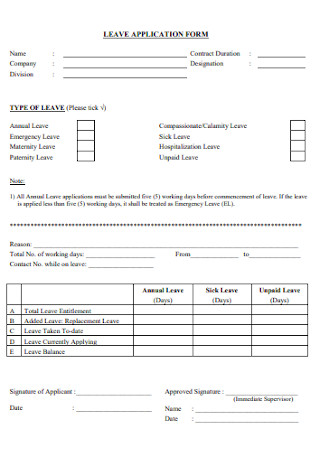
Business Leave Application Form
download now -
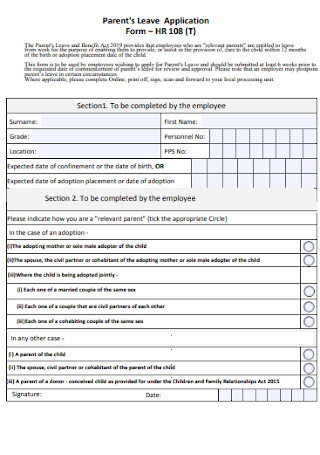
Parents Leave Application Form
download now -

Corporation Leave Application Form
download now -
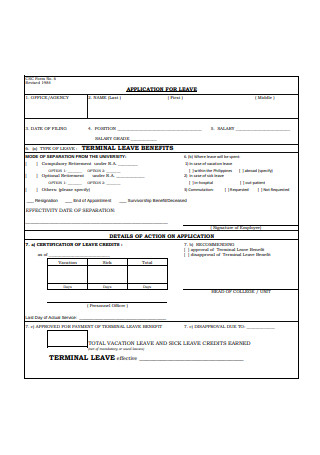
Terminal Leave Application Form
download now -
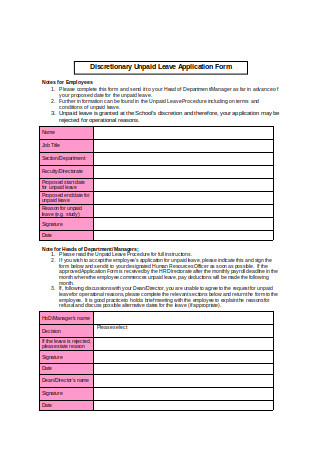
Unpaid Leave Application Form
download now -
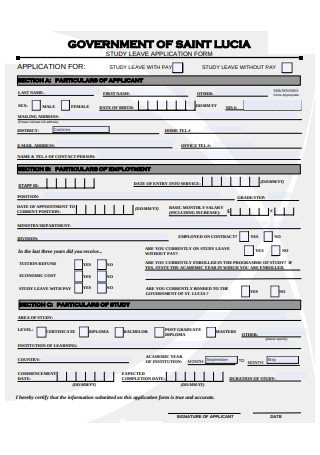
Study Leave Application Form
download now -
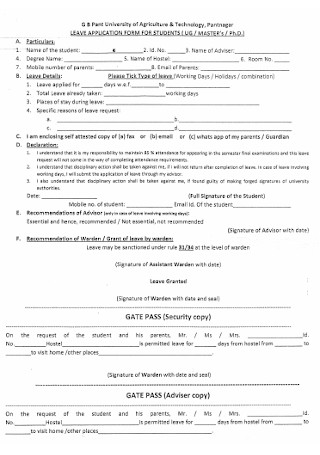
Leave Application Form for Students
download now -

Maternity Leave Application Form
download now -
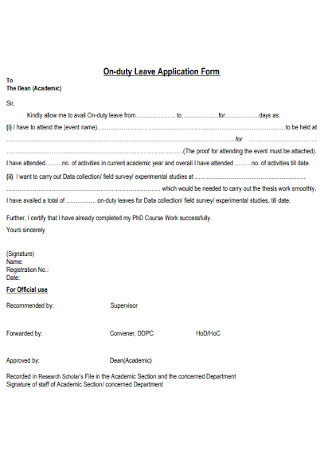
On-duty Leave Application Form
download now -
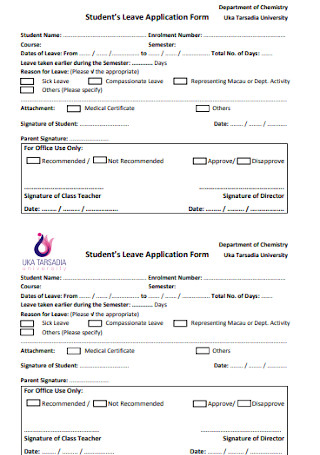
Students Leave Application Form
download now -
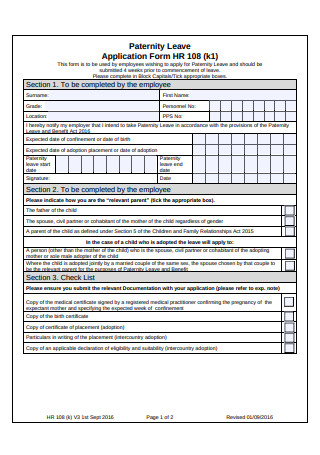
Paternity Leave Application Form
download now -
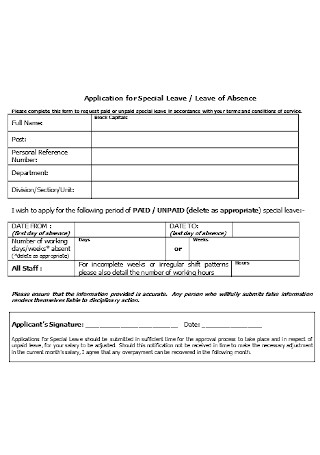
Special Leave Application Form
download now -
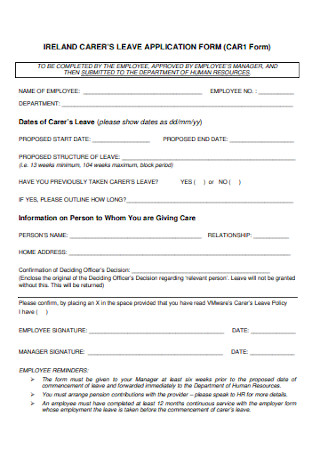
Carers Leave Application Form
download now -
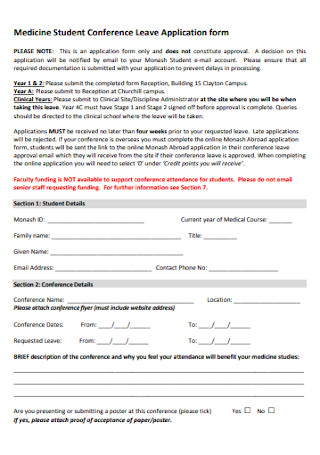
Medicine Student Leave Application Form
download now -
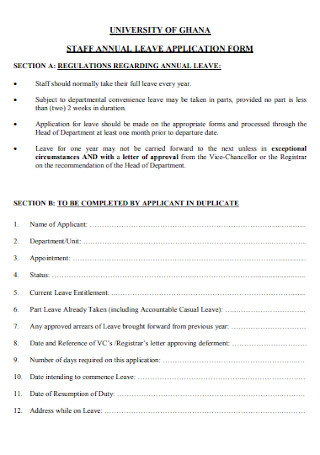
Staff Annual Leave Application Form
download now -
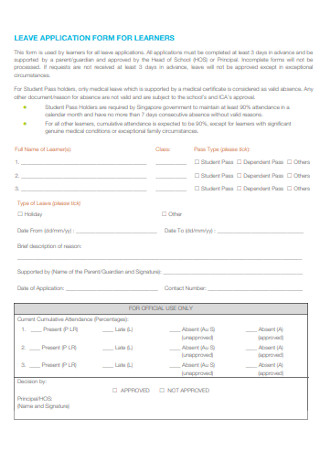
Leave Application Form for Learners
download now -
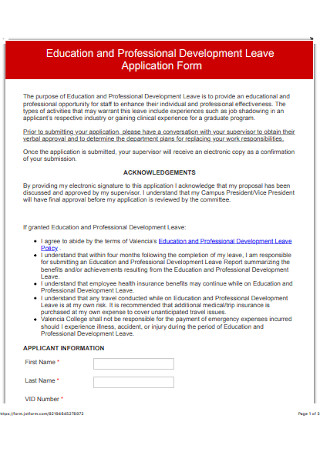
Education Leave Application Form
download now -
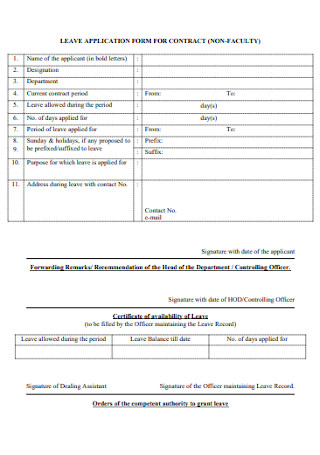
Leave Application Form for Contract
download now -
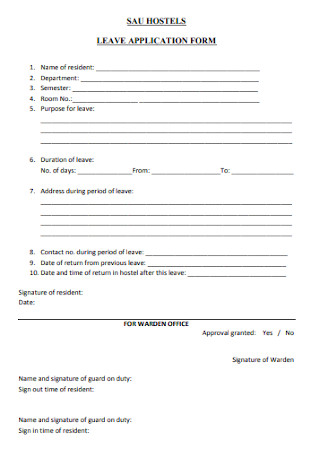
Hostel Leave Application Form
download now -
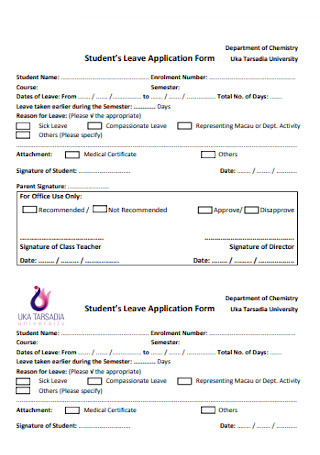
Students Leave Application Form Template
download now -
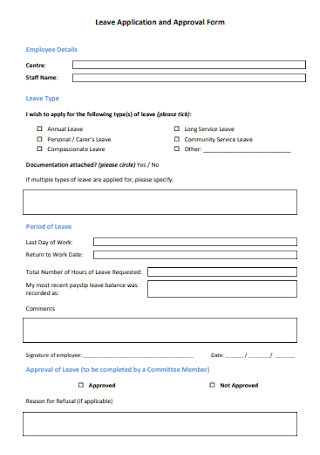
Leave Application and Approval Form
download now -
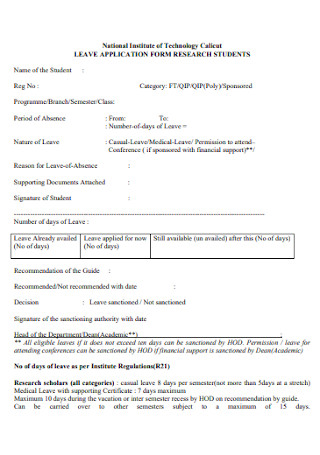
Leave Application Form for Research Students
download now -
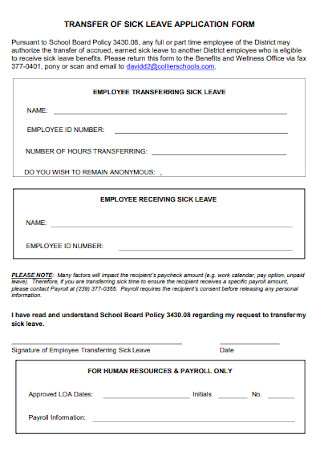
Transfer of Sick Leave Application Form
download now -
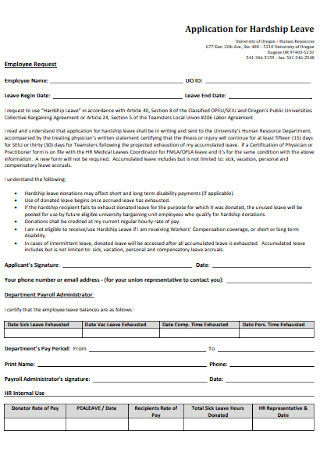
Application for Hardship Leave Form
download now -
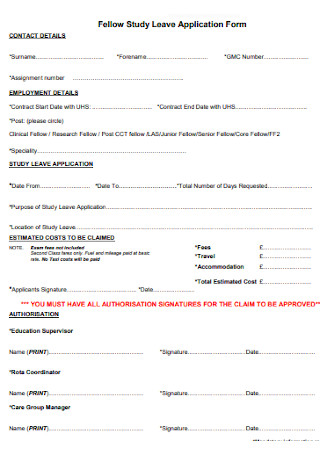
Fellow Study Leave Application Form
download now -
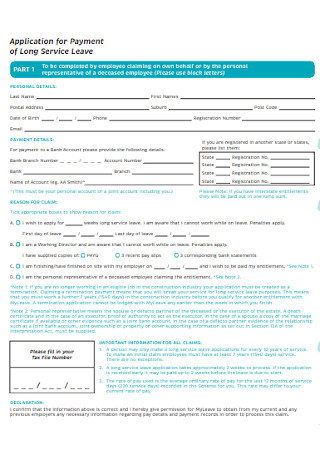
Application Leave Form for Payment
download now -
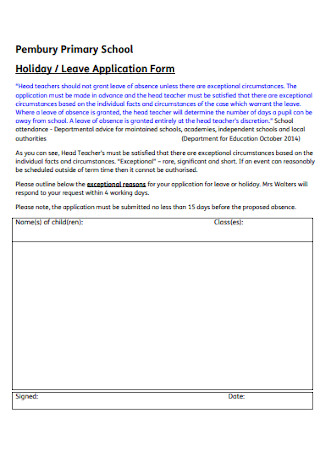
Holiday and Leave Application Form
download now -

Staff Leave Application Form
download now -
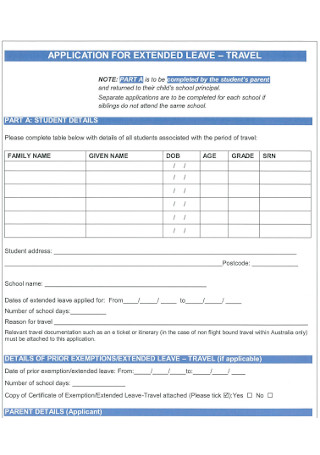
Travel Leave Application Form
download now -

Protected Leave Application Form
download now -
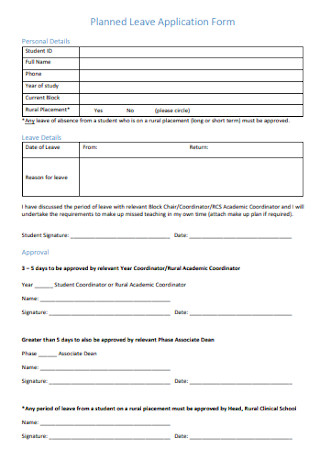
Planned Leave Application Form
download now -

Application for Earned Leave
download now -
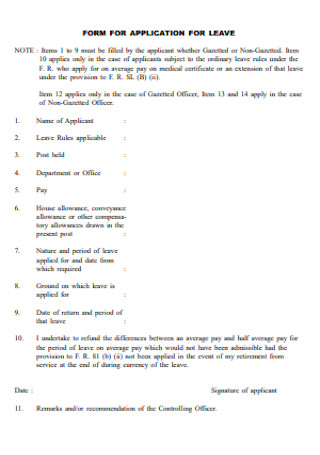
Form for Application for Leave
download now -
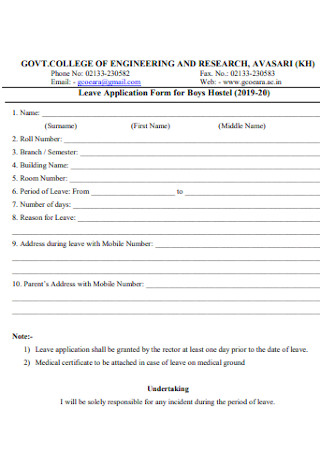
Leave Application Form for Boys Hostel
download now -
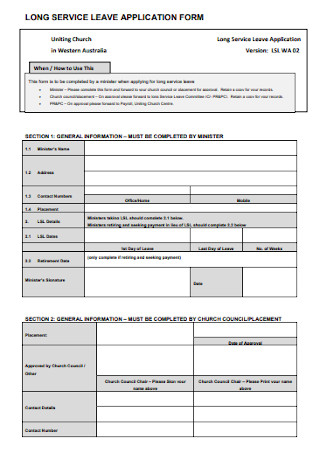
Long Service Leave Application Form
download now -
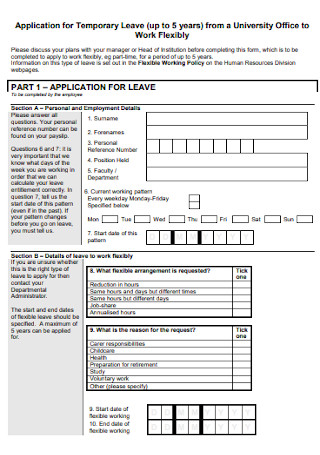
Application for Temporary Leave Form
download now -
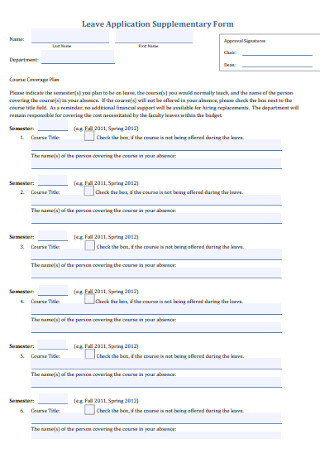
Leave Application Supplementary Form
download now -
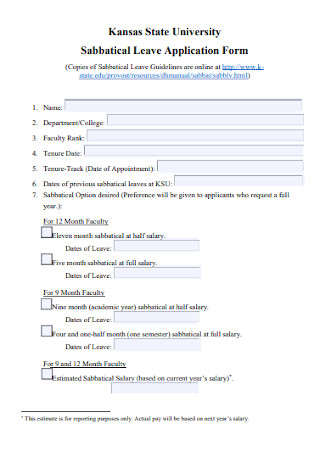
Sabbatical Leave Application Form
download now -
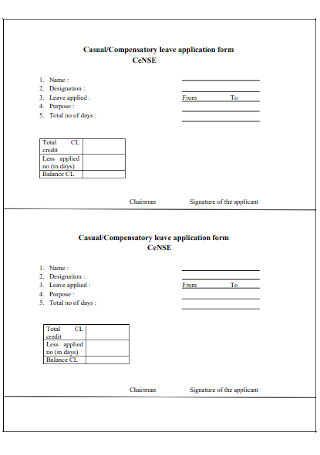
Compensatory Leave Application Form
download now -
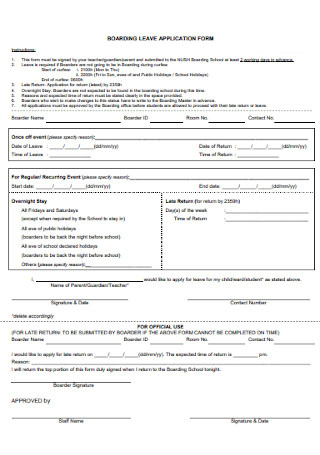
Boarding Leave Application Form
download now -
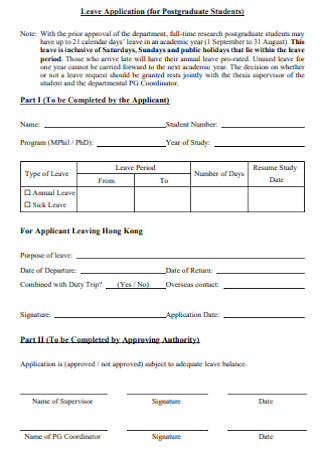
Leave Application Form for PG Students
download now -
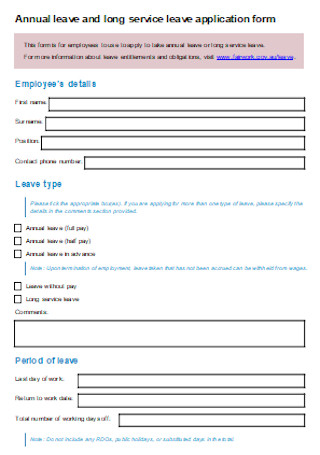
Annual Leave Application Form
download now
FREE Leave Application s to Download
Leave Application Format
Introduction:
Details of Leave:
Contact Information:
Conclusion:
Leave Application
What is a Leave Application Form?
Why Are Leave Application Forms Important?
The Elements of a Leave Application Form
How to Make an Excellent Leave Application Form
What are the different types of leave?
Will leave application forms be automatically accepted?
How Do You Write an Application for Leave?
How Do You Politely Apply for Leave?
How Do I Apply for 3 Days Leave?
How Do I Take 5 Days Leave?
How to Write a Sick Leave Message?
How to Write a Casual Leave?
How Do I Email a 4 Day Leave?
What is the Best Reason to Take Leave?
Is a Leave Letter Formal or Informal?
How Do I Say I Am on Leave Today?
How Do I Ask for a Day Off on Short Notice?
How to Ask for Emergency Leave?
What is a Casual Leave for Personal Reasons?
How Many Days Do You Get for Leave?
Download Leave Application Bundle
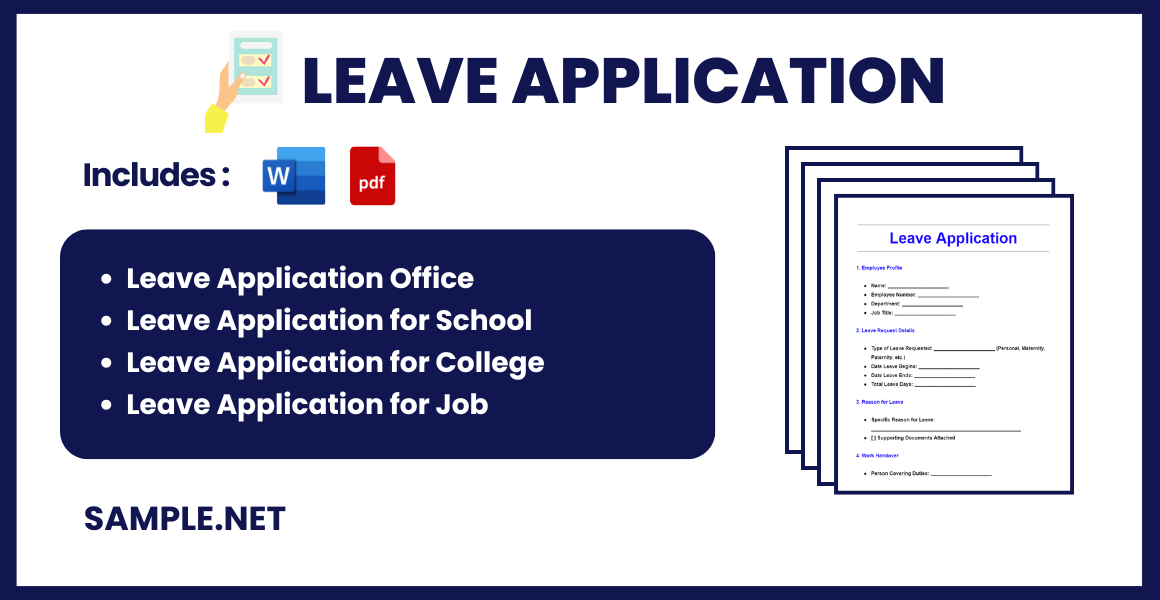
Leave Application Format
To: [Recipient’s Name and Title] [Department/School Name] [Date: DD/MM/YYYY]
Subject: Leave Application
Dear [Recipient’s Name],
Introduction:
- Reason for Leave: [Briefly explain the reason for the leave request]
Details of Leave:
- Type of Leave: [Sick Leave, Casual Leave, etc.]
- Leave Dates: [From Date – To Date]
- Total Days: [Number of Days]
Contact Information:
- During My Absence: [Name of colleague or contact person]
- Contact Number: [Contact Number]
Conclusion:
- Thank You Note: [Express gratitude for considering the application]
Sincerely, [Your Name] [Your Position]
What is a Leave Application Form?
A Leave Application Form is a standardized document used by employees or students to request time away from work or school. This form serves as a formal method of asking for a break for various reasons, ranging from medical leaves to personal days or extended vacations. It includes necessary details such as the dates of the intended leave, the reason for the leave, and often a section for approval from the relevant authority. This process helps maintain order and ensures continuity by planning coverages or adjustments during the absence of the individual.
Why Are Leave Application Forms Important?
Leave application forms are essential for many reasons. One is for documentation purposes. If everyone at work asks permission to be off from duty for a couple of days personally, there are chances for HR to forget who asked for the leave and what other details were involved in the leave. Documenting any leave is helpful to be aware of an employee’s whereabouts. Also, leave applications confirm if the leave is paid or unpaid, which is crucial to note by HR. You can go for a paid vacation or casual leave or, perhaps, unpaid. And if the employee’s paid leaves have been fully used, expect the rest to be unpaid.
Furthermore, a leave application form is relevant to different businesses and functions. Don’t expect a leave application to only work for businesses in an office setting. Leave of absence is used in school or even government entities. What matters is that every organization is clear in implementing the proper regulations to file for leave applications. Thus, there will be lesser conflicts at work. Also, leave applications benefit workers themselves. For example, Statista mentioned that working under the military staff is the most stressful job in the US, garnering a 72.58 score. Taking leave is one way to get some rest and eliminate that stress.
The Elements of a Leave Application Form
While the leave application form’s definition and purpose are clear, how about what’s inside the said document? Indeed, companies and organizations have different content and format in making leave application documents. But, there are typical elements noticed in most examples. In this section, we outlined the common elements found inside leave application forms.
How to Make an Excellent Leave Application Form
Each company is unique. The same can be said that there will be different office forms used in various organizations. Regarding leave application forms, what matters most is that there is a clear design or format on what is acceptable for the company. In this segment, find out the steps on how to create an excellent leave application form. You may also see Return to Work After Leave
Step 1: Pick a Template to Use
Have you checked our samples of leave application form templates already? Check them out until you can choose the best example that works for you. After selecting, tweak the template’s features from its content, design, style, and format. Editing is certainly allowed, and its easy-to-use features won’t give you a stressful experience. Don’t forget to tailor the form with leave-application content or data, so its purpose is clear. You may also see Forced and Mandatory Leave
Step 2: Make the Appropriate Categories
Insert the appropriate labels and categories in the leave application form template. And if you are confused with what groups or categories to make, the elements of application forms discussed earlier will be your guide. Ensure that the document begins with the title down to the signature line. Why is grouping necessary, you might ask? Dividing the details into groups will make the document easier to read than giving a lengthy paragraph type of application form. You may also see Paternity Leave
Step 3: Observe a User-Friendly Experience
Taking a leave might be urgent, like when an employee faces an emergency at home, a special training, or any other reason. Thus, don’t make the process of requesting leave to be a tedious job. It will be productive and stress-free if the whole form observes a user-friendly experience. To do that, ensure that the form is easy to follow. You may add instructions so no employee would struggle in completing the form. You could also keep it short and simple as long as the leave application form’s function will serve. You may also see Leave Tracker
Step 4: Finalize the Format and Submission Process
Lastly, mind the form’s final format and finalize the submission process. Do you need the document in PDF or MS Word? And are you considering an online leave application form or a printed copy instead? Highlight those specifications now. And never forget to introduce all employees about how to submit. Set the rules. For example, state that employees should send a vacation request leave two weeks before the expected leave dates.
What are the different types of leave?
Some examples of the different types of leave are the following:
- Vacation leave
- Annual leave
- Study leave
- Sick leave
- Maternity leave
- Paternity leave
- Parental leave
- Carer’s leave
Will leave application forms be automatically accepted?
No. There are chances for the leave applications to be denied, especially when the reasons behind the leave are unacceptable. But, employers need to provide a reasonable statement for denying the request.
How Do You Write an Application for Leave?
Crafting a leave application is crucial to formally requesting time off from your responsibilities at work or school.
- Start with a Formal Greeting: Address your manager or HR department respectfully.
- State the Purpose: Clearly mention that you are writing to request leave.
- Specify Dates: Indicate the start and end dates of your leave.
- Mention the Reason: Briefly explain the reason for your leave.
- Close Formally: End with a polite closing statement and your signature, similar to a Job Application Form.
How Do You Politely Apply for Leave?
Applying for leave politely involves clear communication and professional courtesy.
- Address the Recipient Respectfully: Use formal titles and last names.
- Express the Request Clearly: State your leave request directly and courteously.
- Provide a Reason: Mention a valid reason for your leave without too much personal detail.
- Mention Work Coverage: Briefly explain how your responsibilities will be managed in your absence.
- Thank for Consideration: Conclude with appreciation for considering your request, akin to a Letter of Application.
How Do I Apply for 3 Days Leave?
Requesting a short-term leave requires clarity and brevity in the application.
- Subject Line: Start with a clear subject line (e.g., “Leave Application for 3 Days”).
- Brief Introduction: Introduce yourself and your request briefly.
- Specific Dates: Clearly state the exact dates you will be away.
- Reason for Leave: Provide a concise reason for your absence.
- Contact Information: Leave contact details for urgent matters, ensuring it’s as clear as an Employment & Job Application Form.
How Do I Take 5 Days Leave?
Taking an extended leave involves detailed planning and clear communication.
- Formal Request: Begin with a formal request stating the nature of the leave.
- Detailed Dates: Specify the starting and ending dates of your leave.
- Explain the Reason: Elaborate on why you need these days off.
- Plan for Responsibilities: Outline how your work will be handled in your absence.
- Request Approval: Politely ask for approval, reflecting the importance of protocol as in a Membership Application.
How to Write a Sick Leave Message?
Informing your employer about sick leave should be done as soon as possible with clarity and conciseness.
- Immediate Notification: Notify your supervisor at the earliest convenience.
- State the Duration: Clearly mention how long you expect to be absent.
- Brief Explanation: Provide a brief explanation of your illness. You may also see Leave Plan
- Express Willingness to Help: Offer to assist remotely if feasible.
- Attach Documentation: Include a doctor’s note if required, similar to submitting a Scholarship Application Form.
How to Write a Casual Leave?
Casual leave applications are less formal but should still communicate the necessary details professionally.
- Mention the Request Upfront: Clearly state your request for casual leave.
- Provide Dates: Specify the date or dates on which you will be taking leave. You may also see Unpaid Leaves
- Reason for Leave: Give a brief reason for your leave, ensuring it’s understandable.
- Assure Continuity: Mention any arrangements you’ve made to cover your duties.
- Seek Approval: End with a polite request for approval, akin to an Visa Application.
How Do I Email a 4 Day Leave?
Emailing a leave request should be direct and respectful, providing all necessary information upfront.
- Clear Subject Line: Use a descriptive subject line (e.g., “Request for 4-Day Leave”).
- Formal Salutation: Address your manager or the HR department formally.
- Leave Dates and Reason: Clearly state when you will be gone and why.
- Coverage Plan: Describe how your work will be handled in your absence.
- Request for Approval: Politely ask for the leave to be granted, incorporating the clarity of a Loan Application Form.
What is the Best Reason to Take Leave?
The best reason to take leave is for health-related issues, family emergencies, or significant personal matters, similar to reasons in a Residential Rental Application.
Is a Leave Letter Formal or Informal?
A leave letter is typically formal, much like a Job Application, and should adhere to professional standards of communication.
How Do I Say I Am on Leave Today?
Simply state, “I will be on leave today due to [brief reason].” Ensure it’s clear and concise, similar to a Vendor Application notification.
How Do I Ask for a Day Off on Short Notice?
Explain your urgent situation briefly and politely request the day off, similar to an urgent query in Business Credit Application.
How to Ask for Emergency Leave?
Request emergency leave by clearly stating your situation’s urgency and immediate need, akin to the directness in an Employment Application.
What is a Casual Leave for Personal Reasons?
Casual leave for personal reasons is taken for non-urgent, personal matters, similar to disclosures in a College Application Personal Statement.
How Many Days Do You Get for Leave?
The number of leave days typically depends on company policy or local labor laws, similar to terms outlined in Rental Application.
In conclusion, a Leave Application Form is a critical tool in any organizational setting, facilitating a systematic approach to handling absences. This guide provides essential samples, forms, and template letters that can be customized to suit any requirement, from brief personal leaves to comprehensive Vacation Leave Plan. Effective use of these documents ensures that both the applicant’s needs and the organization’s requirements are met, maintaining a balanced professional or academic environment.

